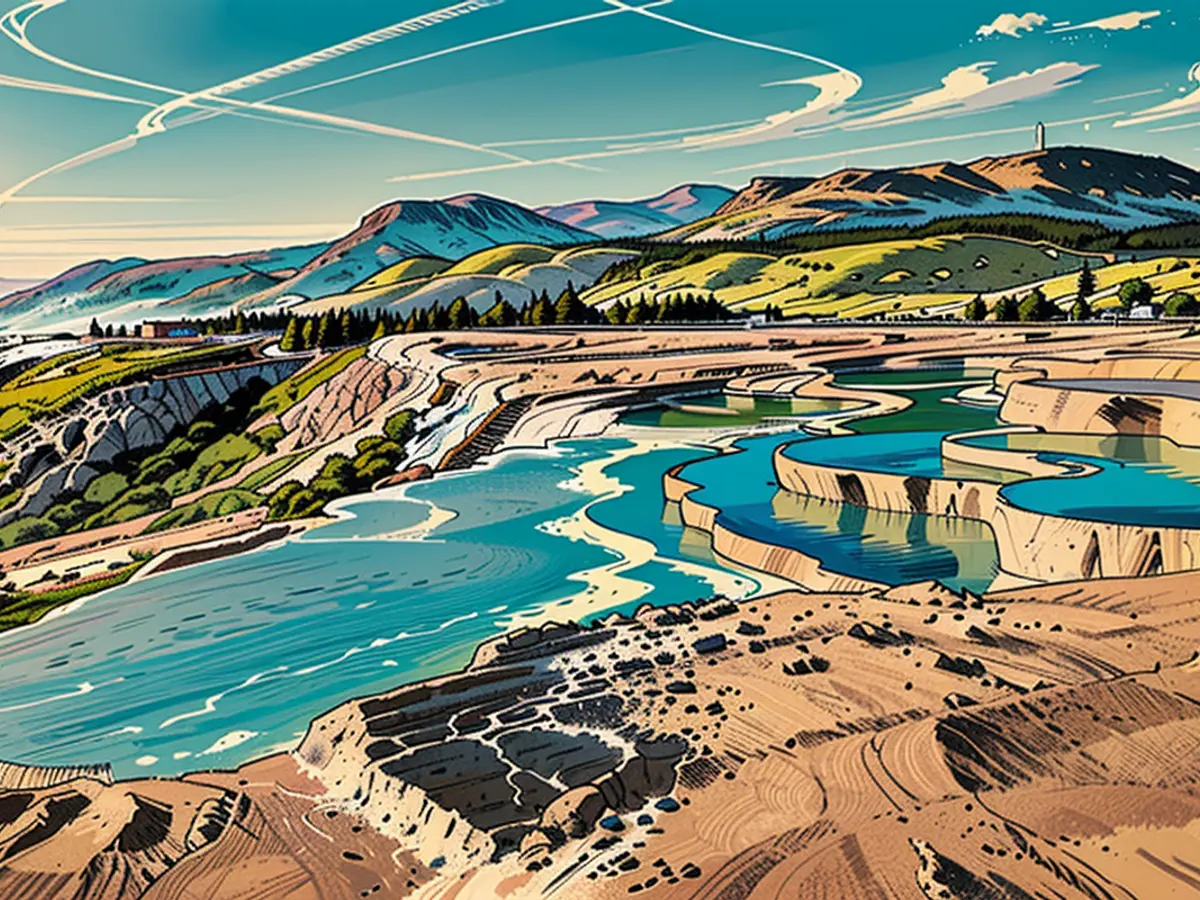The enchanted white stone realm boasting bubbling soaking pools
Why isn't it dissolving as summer temperatures approach 100 degrees Fahrenheit, or 37 degrees Celsius, with the heat hovering in the scorching air?
This unique and captivating sight, nestled in the sun-kissed hills of southwestern Turkey, deviates from being snow. In fact, the water it's derived from occasionally erupts from the earth at boiling point.
And those crowds congregating near its summit don't seem to be leaving anytime soon. Most are here to witness this extraordinary spectacle, either dabbling in the water or basking in some of the Earth's most visually striking pools.
Today, Pamukkale's chalky limestone slopes and pools, filled with milky blue mineral water, are prime for Instagram moments, particularly during the golden hour, as the sun casts the pools' rippled surfaces in shades of pink.
Gateway to Hell
But this place was a tourist sensation eons before social media, as the Greeks and then the Romans flocked here for the thermal waters and to pay reverence at what was considered a gateway to Hell.
Today, Pamukkale and the ancient city of Hierapolis, sprawled across the plateau above the white terraces, are part of a UNESCO World Heritage site drawing coachloads of visitors. Typically, many visit for a few hours, but it's worth spending at least a day in this geological and historical playground.
Enter through the South Gate – tickets cost 30 euros (approx. $33) – and it's easy to feel unimpressed at first. There's not much to see under the influence of a few toppled ancient columns, which are a common sight across Turkey.
In truth, the site of Hierapolis and Pamukkale is immense, so it takes a while to reach the good stuff (golf carts can be rented for those in a rush or unable to traverse the distances here). Nevertheless, when the grand revelation finally occurs, it's all the more exhilarating.
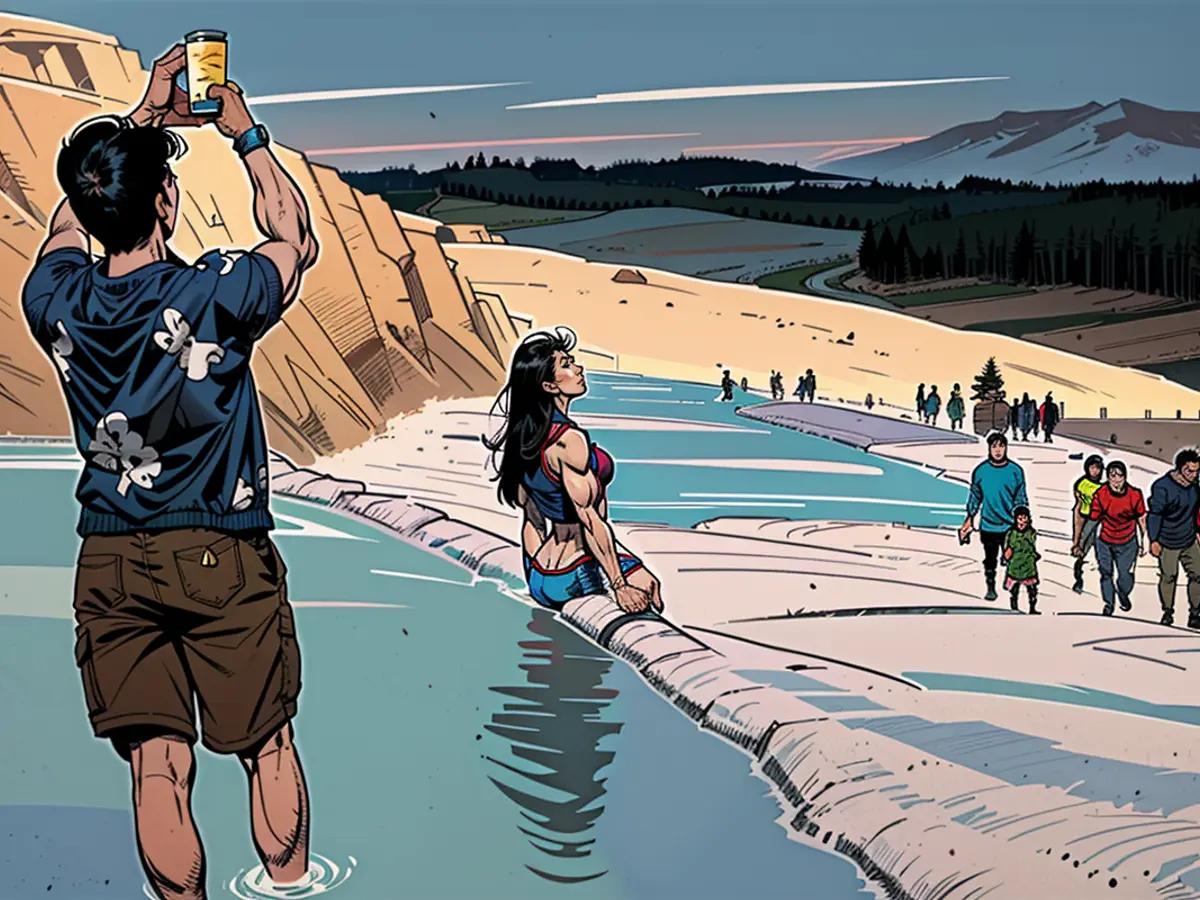
After 10 minutes of strolling along paved pathways from the gate, the line of trees bordering the plateau comes into view. Even if you know what's coming, there's still a wow factor when you finally reach it, and the sight of that white landscape is unveiled.
Over time, the calcite deposited by the thermal water spurting from the ground has reshaped this slope, creating chalky terraces that give the area its name - Pamukkale, which translates to "cotton castle" in Turkish.
These terraces once harbored countless naturally formed blue pools. Most of these are now void of water, leading to some criticism that the site no longer lives up to the images showcasing it in its heydays.
“It's beautiful, but I was expecting more water,” shares Mary Huang, a tourist from Guangzhou in southern China, snapshooting a photograph from the pool's edge. “The view is breathtaking though.”
Serene pools
There remains an enchanting series of tranquil pools, cascading down the slope. It's an enjoyable spot for wading or lazing in the shallow waters and mud alleged to possess therapeutic properties.
To uncover the terraces, travelers must shed their footwear. The rock is uncomfortable and slippery in certain areas, but it doesn't take long to reach the first in the sequence of pools where toes sink into soft sediment.
The top terraces are the most crowded, but for those venturing further down, there's every possibility of securing a pool by oneself.
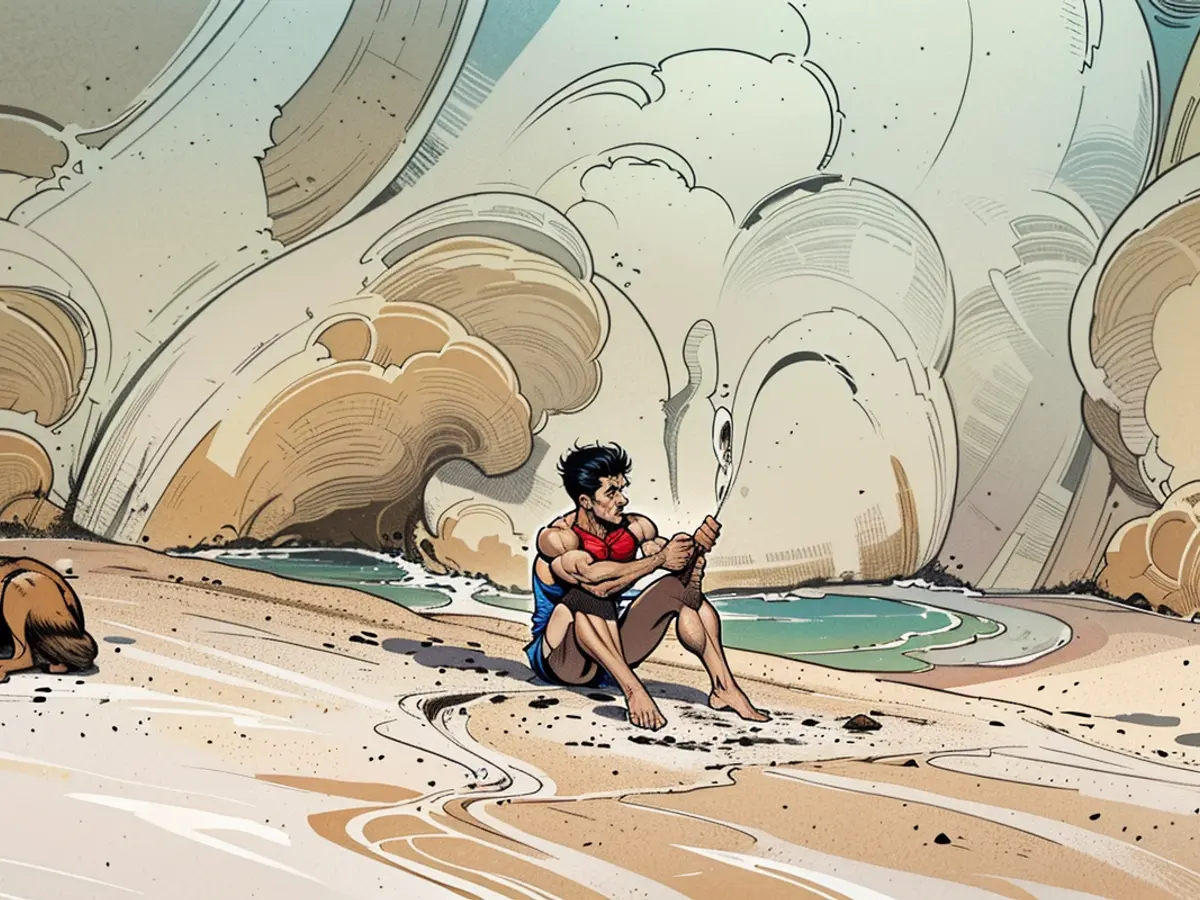
DJ Tiz, a South Korean music producer, touring Turkey with his singer partner, Fre Naz, applies mud generously to their skin beneath a protective watchful eye from an affectionate dog. Having basked in the country's stunning landscapes, he proclaims: “I love Pamukkale the most.”
For a more complete spa experience, there's the Antique Pool, located around a 5-minute stroll from the top of the terraces. For a minor expense, visitors can utilize changing rooms and bathe and swim in crystal-clear thermal waters above the ruins of an ancient temple dedicated to Apollo.
Even better, as you approach the water source, in one corner of the pool, it becomes infused with countless tiny fizzing bubbles – it's like swimming in warm Champagne or soda. The water is said to alleviate skin, cardiovascular, and rheumatic problems. Consuming water from a pump nearby is also said to address digestion-related conditions.
Noxious fumes
You can spend hours exploring the remains of Hierapolis – highlights include the vast 2nd-century agora marketplace, the magnificent Roman theater, and the necropolis' tombs.
The size of the site reveals Hierapolis' one-time power and fame (it even earns a mention in the Bible alongside another closeby ruined city, Laodicea, also worthy of a visit). Much of Hierapolis' prestige stemmed from the geothermal forces lurking beneath its surface.
While many Romans and Greeks who visited the city were undoubtedly here for the warm waters, the place had significant religious connotations as the site of a Plutonium cave, or entrance to Hell.
Here, in awe of the audience, sacrificial animals such as bulls would drop dead after inhaling poisonous carbon dioxide fumes swirling up from beneath. The priests, guiding them, would emerge unscathed, having mastered the art of holding their breath.
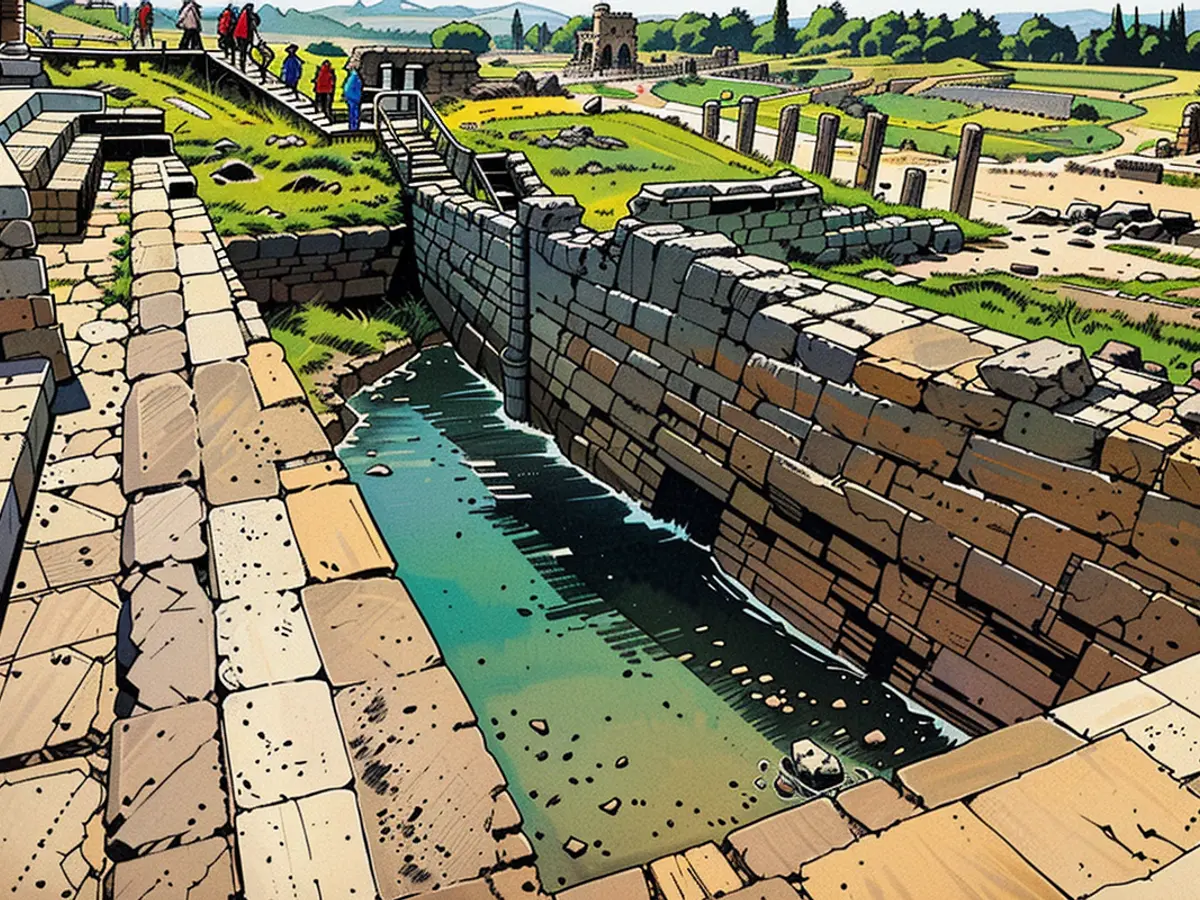
Today, the Plutonium – positioned between the Antique Pool and the Roman theater – is another must-visit attraction in Hierapolis, and one of many locations in the city that come alive under the cooler evenings' cover, when some attractions are illuminated for an enchanting nighttime experience.
While Pamukkale has gained popularity due to its stunning appearances in social media, some locals express regret over the transformation in tourism to the area.
According to Ali Durmus, owner of Turkey Magic Travel, the enclosure of most travertines and the rerouting of water since its designation as a UNESCO World Heritage site has taken away a centuries-old experience for visitors, causing them to leave sooner.
The UNESCO recognition led to the demolition of on-site hotels, the construction of new pools, the redirection of water through man-made channels, improved site management, and the closure of the slopes to prevent further degradation. The graying of the once-white travertines was a result of the degradation.
"If tourists cannot enjoy the water, they won't stay longer. Perhaps they'll only stay for one night or just visit for a few hours," Durmus says.
He fears that the diminished experience might prevent visitors from exploring the surrounding area, which offers other geothermal attractions. Towns situated northwest of Pamukkale along a geological fault line have tapped into increasingly hotter sources of steam and water gushing up from beneath the earth's surface.
Approximately 20 minutes away, the town of Karahayit features spas and heating systems based on the iron-rich red waters that emerge at temperatures around 122 degrees Fahrenheit (50 degrees Celsius). This town also boasts a beautifully covered market filled with street vendors selling delicious local mulberry juice.
Further away, the town of Buharkent, whose name translates to "steam city," utilizes water at boiling point to operate Turkey's first geothermal power station.
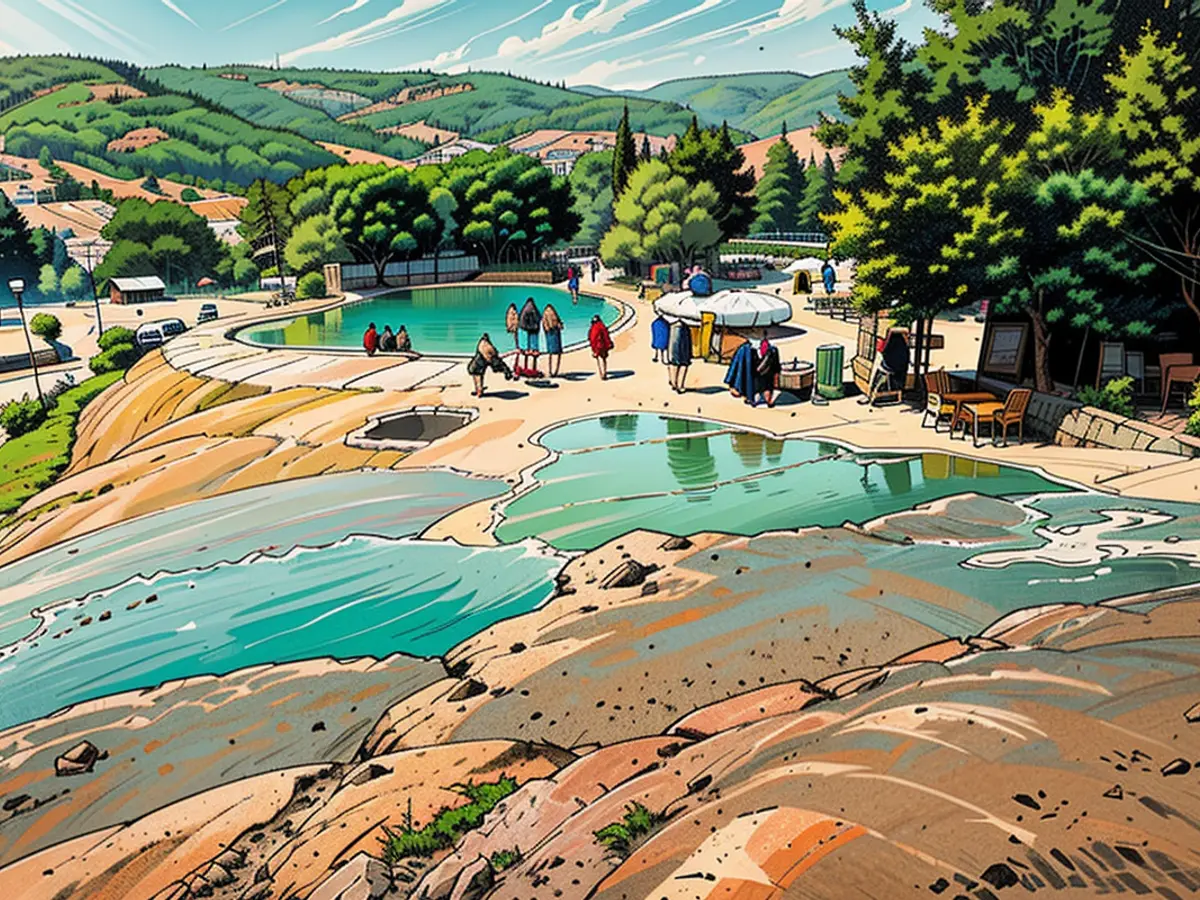
In the winter, it can get chilly enough for snow to fall in Pamukkale, but thanks to the primal forces propelling up from its underground portals and covering the hillsides in white, it remains a popular, warm destination.
Despite the scorching heat, the crowd at Pamukkale shows no signs of leaving, drawn by the extraordinary thermal waters. Many come to immerse themselves in the milky blue mineral pools, seeking both visual delight and potential therapeutic benefits.
For those seeking a more complete spa experience, the Antique Pool offers crystal-clear thermal waters and the unique sensation of swimming in bubbling liquid, said to aid various health issues.
Read also:
- Fear of escalation in the Middle East: US Secretary of State Blinken travels to the region again
- Government circles: US Secretary of State Blinken to travel to Middle East again
- Bridging days 2024: How you can double your vacation this year
- Germany has wanderlust: how tour operators and airlines are looking ahead to the next travel year
